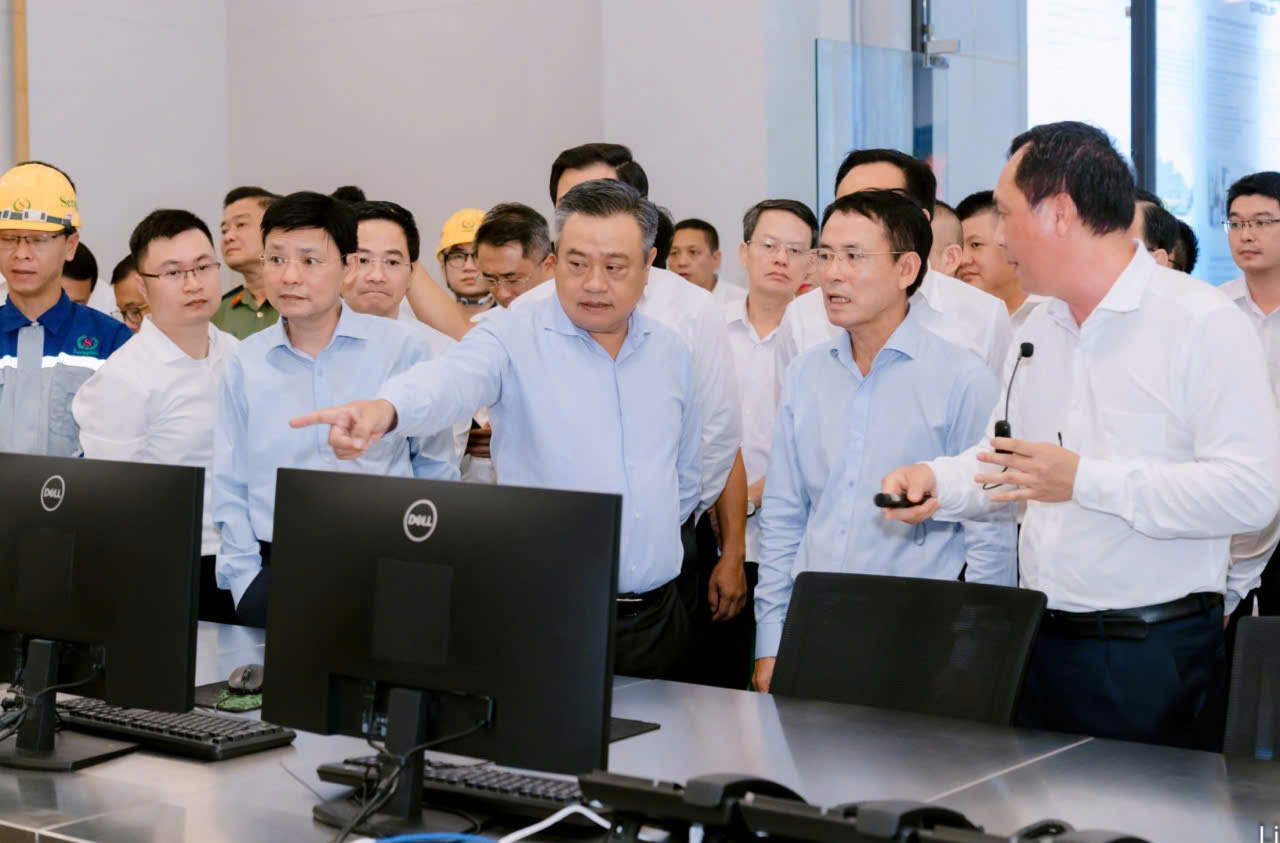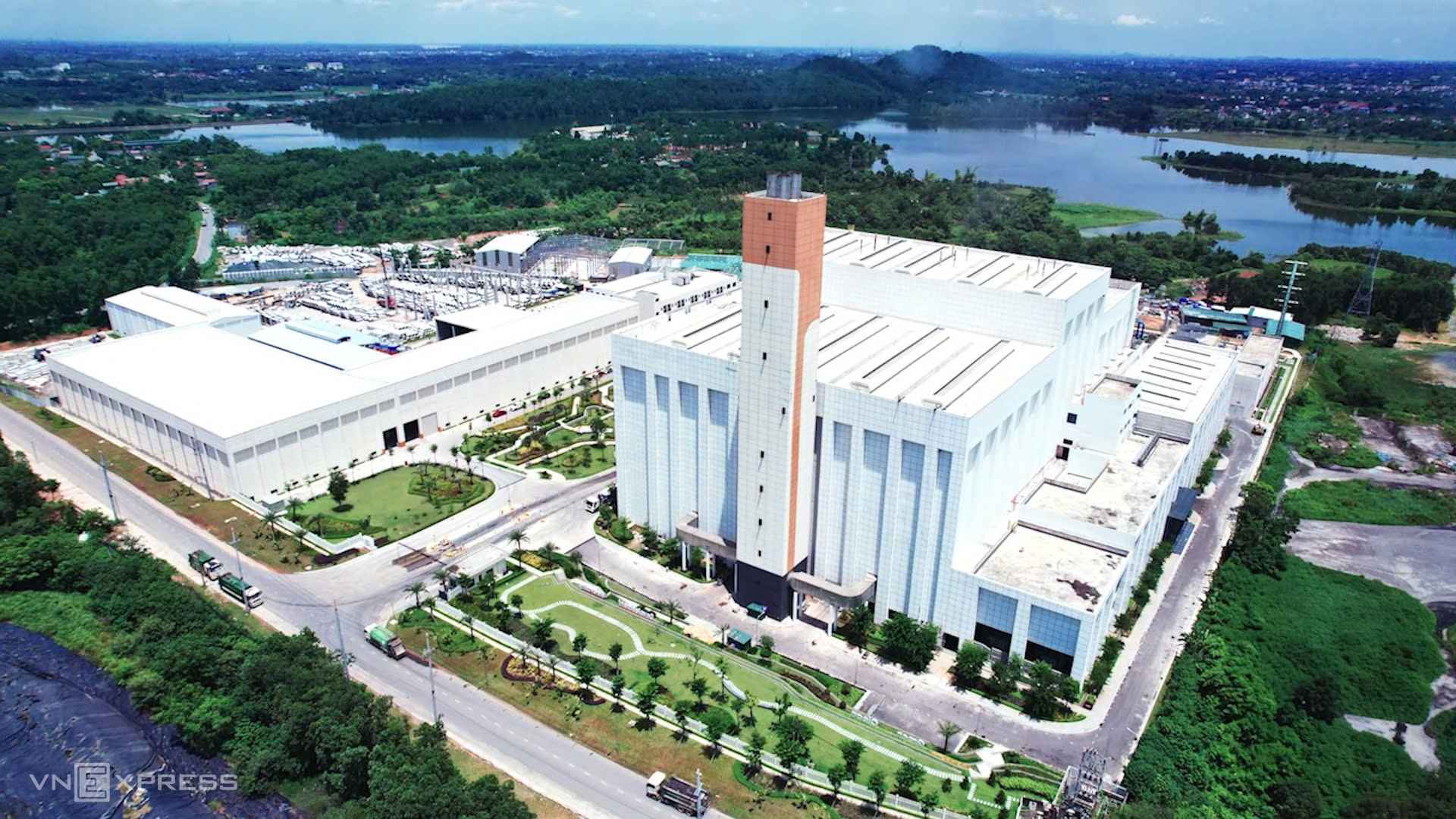Hanoi generates over 7,600 tons of household waste daily, placing significant pressure on infrastructure, the environment, and residents' lives, Vice Chairman Nguyen Trong Dong stated at the Seraphin waste-to-energy plant inauguration in Tung Thien commune on 18/9. For years, most waste has been disposed of through landfill, an outdated method with potential pollution risks.
 |
Chairman Tran Sy Thanh visits the Seraphin waste-to-energy plant on the morning of 18/9. Photo: Hoang Phong |
Chairman Tran Sy Thanh visits the Seraphin waste-to-energy plant on the morning of 18/9. Photo: Hoang Phong
According to the vice chairman, the Seraphin plant's operation marks a shift from landfill to modern processing, transforming waste into a resource, turning a "problem" into "value," and contributing to a circular economy.
"The Seraphin plant's inauguration is just the beginning," Dong said. Hanoi aims to end household waste landfill entirely, replacing it with modern technologies like waste-to-energy incineration, recycling, and reuse, while promoting source separation and developing a comprehensive collection, transportation, and processing system.
 |
An aerial view of the Seraphin waste-to-energy plant. Photo: Van Loc |
An aerial view of the Seraphin waste-to-energy plant. Photo: Van Loc
The Seraphin plant, with a total investment of nearly 5,000 billion VND and an area of 6.28 hectares, began construction in 3/2022, started receiving waste in May, and began commercial power generation in July. It processes 2,250 tons of waste per day, generating 37 MW of electricity using German Martin incineration technology. The plant currently handles about one-third of Hanoi's daily household waste, reducing landfill by 97-98%.
Byproducts are recycled and reused for socio-economic development: electricity is fed into the national grid, and ash and slag are used to produce precast concrete and non-fired bricks. From 2026, the plant plans to offer free tours for residents and students to learn about modern waste processing and contribute to environmental protection in the capital.
Delegates visit and cut the ribbon at the Seraphin waste-to-energy plant inauguration on the morning of 18/9. Video: Van Loc
In addition to Seraphin, the Soc Son waste-to-energy plant processes 4,000-5,000 tons of waste per day, generating 90 MW of electricity. The city also plans to excavate old landfill waste for processing, transforming the landfill site into a park.
Last June, the city council approved the construction of another waste-to-energy plant in Nam Son, Soc Son district, to handle daily waste, backlog, and sludge, improving the area's environment.
Vo Hai












